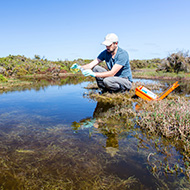Nagoya Protocol posing challenges for livestock disease control
Experts say the Protocol is slowing down the production of FMD vaccines.
Experts in foot-and-mouth disease (FMD) have criticised the Nagoya Protocol, suggesting that the international agreement has challenged the control of livestock diseases.
The specialists suggest that the legislation, as well as the differing administrative structures across nations, is delaying access to FMD virus isolates and disrupting vaccine production.
The Nagoya Protocol on Access and Benefit Sharing was implemented in 2014, to supplement the Convention on Biological Diversity in achieving fair sharing of the benefits of genetic resource usage. The Protocol, approved or ratified by nearly 140 countries, aimed to incentivise the conservation and sustainable use of genetic resources.
FMD experts from multiple agencies and institutions have now co-written an article voicing their concerns about the impact of the Protocol on the control and treatment of livestock diseases such as FMD.
The article, written by 29 specialists, commends the goals of the Protocol in providing fair and equal access to genetic resource benefits.
However the authors also criticise the access and benefit-sharing legislation, and related administrative structures within nations, for the ‘significant logistical challenges’ posed to the control of transboundary livestock diseases.
The experts say that the Protocol is slowing down access to FMD virus isolates from the field, and affecting the production of new vaccines. This, in turn, delays the development of other tools for surveillance, research and outbreak control.
Dr Don King, who leads the Food and Agriculture Organisation World Reference Laboratory for FMD at The Pirbright Institute, said: ““Our aim is to promote wider awareness of the Nagoya Protocol, and to highlight its impacts on the regular exchange and utilisation of biological materials collected from clinical cases which underpin FMD research activities, and work to develop new epidemiologically relevant vaccines and other diagnostic tools to control the disease.”
“There is an urgent need to clarify the framework and related processes for both users and providers and for a greater science-policy dialogue both within and among countries to ensure a better understanding and more effective implementation of the Nagoya Protocol and related ABS measures.”
The full article has been published in the journal Frontiers of Veterinary Science.
Image © Shutterstock



 A set of international guidelines for disease surveillance in wildlife has been updated for the first time since 2015.
A set of international guidelines for disease surveillance in wildlife has been updated for the first time since 2015.